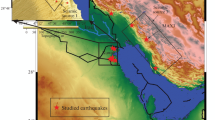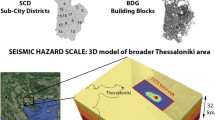Abstract
— The estimation of realistic seismic input can be obtained from the computation of a wide set of time histories and spectral information, corresponding to possible seismotectonic scenarios for different source and structural models. Such a data set can be very constructively used by civil engineers in the design of new seismo-resistant structures and in the reinforcement of the existing built environment, therefore supplying a particularly powerful tool to the prevention efforts of Civil Defense. The availability of realistic numerical simulations enables us to estimate the amplification effects in complex geological structures exploiting the available geotechnical, lithological, geophysical parameters, topography of the medium, tectonic, historical, paleoseismological data, and seismotectonic models. The realistic modeling of the ground motion is a very important source of knowledge for the preparation of groundshaking scenarios which represent a valid and economical tool in seismic microzonation.
Similar content being viewed by others
Author information
Authors and Affiliations
Additional information
(Received February 18, 1999, reviewed/accepted April 26, 2000)
Rights and permissions
About this article
Cite this article
Panza, G., Vaccari, F. & Romanelli, F. Realistic Modeling of Seismic Input in Urban Areas: A UNESCO-IUGS-IGCP Project. Pure appl. geophys. 158, 2389–2406 (2001). https://doi.org/10.1007/PL00001176
Issue Date:
DOI: https://doi.org/10.1007/PL00001176




